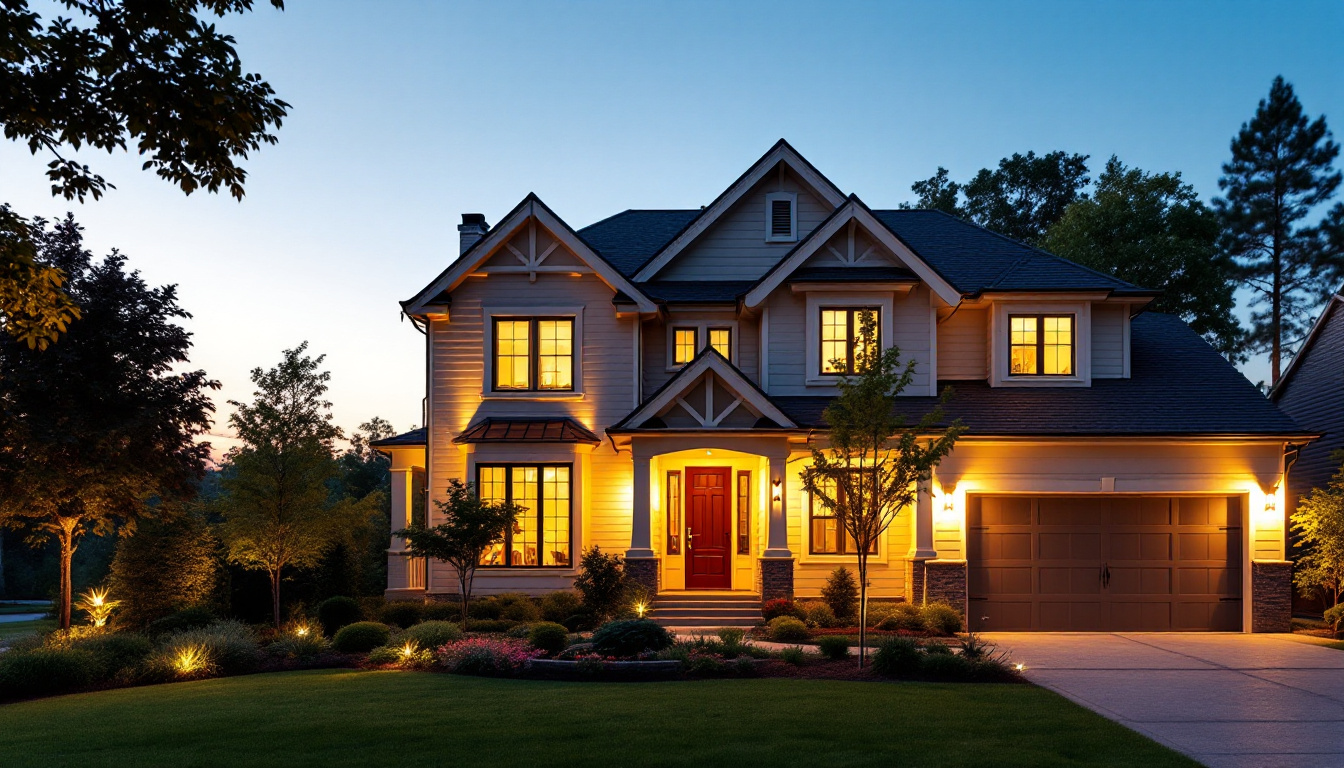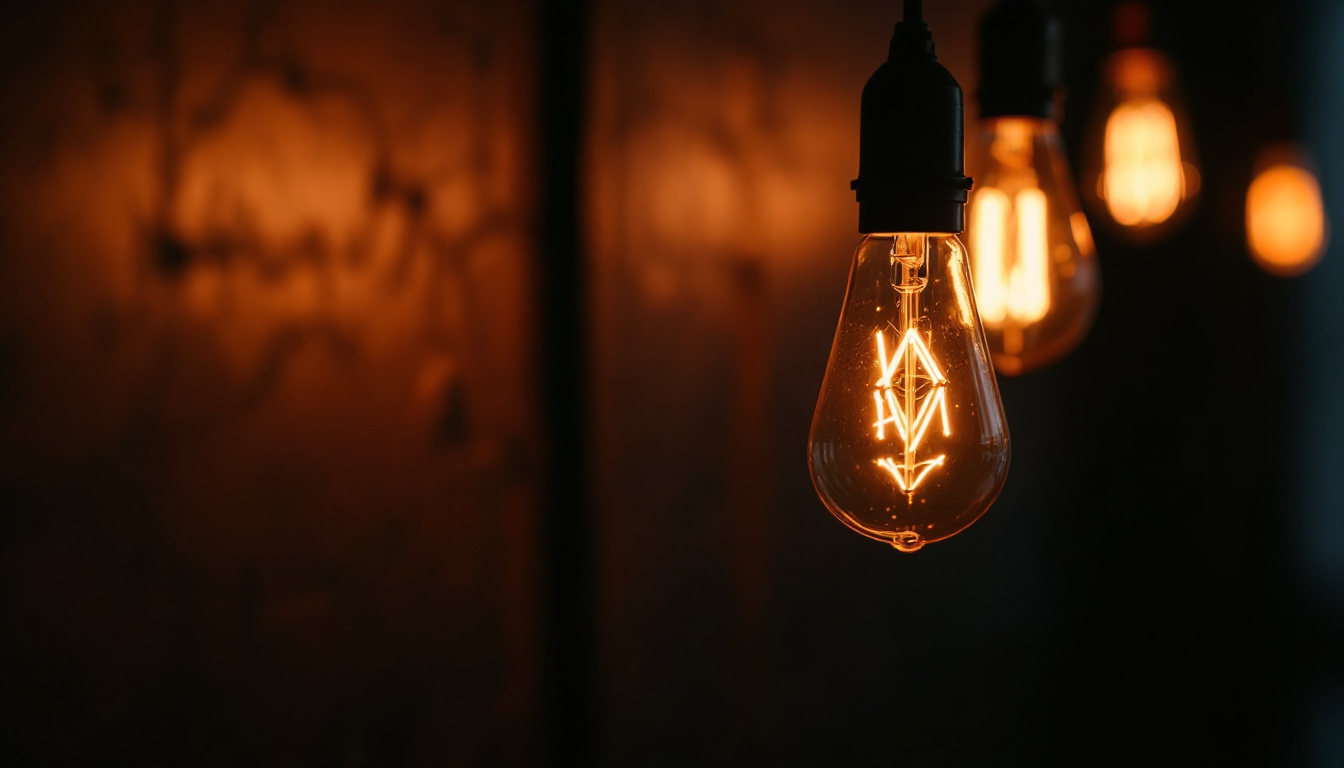
Lighting plays a crucial role in enhancing the aesthetics and functionality of outdoor spaces. For lighting contractors, understanding compliance regulations is essential to ensure that installations are not only visually appealing but also safe and legal. This article delves into the various aspects of outdoor lighting compliance, providing valuable insights for lighting contractors.
Compliance regulations for outdoor lighting are designed to ensure safety, energy efficiency, and environmental protection. These regulations can vary significantly based on location, and it is vital for lighting contractors to stay informed about the specific codes applicable in their area.
Typically, these regulations cover aspects such as light pollution, energy consumption, and safety standards. Understanding the local building codes, zoning laws, and environmental regulations is crucial for contractors to avoid potential legal issues and ensure client satisfaction. Moreover, staying updated on evolving regulations can also present opportunities for contractors to offer innovative solutions that align with sustainability goals, which are increasingly important to clients and communities alike.
Local building codes dictate the standards for construction and installation practices within a specific jurisdiction. For lighting contractors, this means adhering to specific requirements regarding the type of fixtures used, the height of installations, and the placement of lighting elements. Failure to comply with these codes can result in fines, project delays, or even the need to redo installations.
Contractors should familiarize themselves with the International Building Code (IBC) and the National Electrical Code (NEC), as these documents provide a framework for safe and compliant installations. Additionally, local amendments to these codes may exist, so it is essential to consult with local authorities or building inspectors before commencing work. Understanding these codes not only helps in compliance but also enhances the contractor’s reputation as a knowledgeable and reliable professional in the field, which can lead to increased business opportunities through referrals and repeat clients.
Zoning laws regulate land use and can significantly impact outdoor lighting projects. These laws may dictate the types of lighting allowed in specific areas, including residential, commercial, or industrial zones. For example, some residential areas may have restrictions on the brightness or color of exterior lighting to minimize light pollution and maintain neighborhood aesthetics.
Contractors must research the zoning laws applicable to their projects to ensure compliance. This may involve obtaining permits or variances, especially for larger installations or projects in sensitive areas. Engaging with local planning departments can provide clarity on any restrictions that may apply. Additionally, understanding the community’s vision for development can help contractors propose lighting solutions that not only meet regulatory requirements but also enhance the overall ambiance and functionality of the space, fostering a sense of community pride and safety.
Light pollution is a growing concern in many communities, leading to increased regulations aimed at minimizing its impact. Lighting contractors need to understand the implications of light pollution and how to design installations that comply with environmental standards. The effects of light pollution extend beyond mere aesthetics; it can disrupt ecosystems, interfere with nocturnal wildlife behavior, and even impact human health by disrupting circadian rhythms. As communities become more aware of these consequences, the demand for effective, environmentally friendly lighting solutions continues to rise.
Effective outdoor lighting should enhance visibility without contributing to excessive brightness or glare. This requires a thoughtful approach to fixture selection, placement, and shielding. By prioritizing designs that reduce light spill and promote energy efficiency, contractors can contribute to a more sustainable environment while meeting compliance requirements. Moreover, engaging with local communities to raise awareness about the importance of reducing light pollution can foster a collaborative approach to achieving better lighting practices.
Choosing the right type of fixtures is essential for minimizing light pollution. Full-cutoff fixtures, for instance, are designed to direct light downward, reducing glare and preventing light from spilling into unintended areas. This not only helps in complying with local regulations but also enhances the overall quality of the lighting design. Additionally, the use of adaptive lighting technologies, which adjust brightness based on real-time conditions, can further mitigate the effects of light pollution while providing adequate illumination when needed.
In addition to fixture selection, proper shielding is critical. Using shields or baffles can help control the direction of light and minimize glare for nearby residents. Contractors should consider the surrounding environment when designing lighting layouts, ensuring that installations do not disrupt wildlife or contribute to skyglow. For instance, areas near natural habitats may require specialized fixtures that not only comply with regulations but also protect local flora and fauna from the adverse effects of artificial lighting.
Energy efficiency is another key aspect of outdoor lighting compliance. Many jurisdictions have implemented standards that require specific energy-efficient technologies, such as LED lighting. These standards not only help reduce energy consumption but also lower operating costs for clients. The transition to LED technology has proven to be a game-changer, offering longer lifespans and reduced maintenance needs, which can significantly benefit both contractors and property owners in the long run.
Contractors should stay informed about the latest energy efficiency guidelines and technologies. Incorporating smart lighting solutions, such as motion sensors and timers, can further enhance energy savings and compliance with regulations. Educating clients about the benefits of energy-efficient lighting can also help in securing projects and ensuring satisfaction. Furthermore, promoting the use of renewable energy sources, such as solar-powered lighting options, can not only help in meeting energy standards but also position contractors as leaders in sustainable practices within the industry, appealing to environmentally conscious clients.
Safety is paramount in any outdoor lighting project. Compliance with safety standards protects both the contractor and the client from potential hazards. Understanding and implementing best practices in installation can significantly reduce risks associated with electrical systems and physical installations.
Contractors should adhere to the NEC guidelines, which provide comprehensive standards for electrical installations. This includes proper wiring techniques, grounding practices, and the use of weather-resistant fixtures. Regular training and updates on safety standards can help contractors maintain a high level of expertise in this area.
Electrical safety is a critical component of outdoor lighting compliance. Contractors must ensure that all electrical components are rated for outdoor use and installed according to the NEC. This includes using appropriate wiring methods, circuit protection devices, and ensuring that all connections are secure and weatherproof.
Additionally, contractors should be aware of the potential hazards associated with working near water sources, such as pools or ponds. Implementing GFCI (Ground Fault Circuit Interrupter) protection is essential in these areas to prevent electrical shock hazards.
Physical safety during installation is equally important. Contractors should follow best practices for ladder safety, use proper personal protective equipment (PPE), and ensure that work areas are clear of hazards. Training employees on safety protocols can help prevent accidents and injuries on the job site.
Moreover, it is advisable to conduct a thorough site assessment before beginning any installation. Identifying potential hazards, such as uneven terrain or overhead power lines, can help mitigate risks and ensure a safer working environment.
Effective communication with clients is essential for successful outdoor lighting projects. Educating clients about compliance requirements, design options, and maintenance needs can help foster a positive working relationship and ensure satisfaction with the final product.
Contractors should provide clear explanations of the compliance regulations that apply to their projects. This includes discussing the importance of adhering to local codes, zoning laws, and environmental considerations. By involving clients in the decision-making process, contractors can build trust and ensure that the final design aligns with the client’s vision.
When discussing design options, contractors should present a range of choices that comply with regulations while also meeting the client’s aesthetic preferences. This may include various fixture styles, color temperatures, and lighting techniques, such as uplighting or downlighting.
Customization is key to creating a unique outdoor lighting experience. Contractors can work with clients to develop tailored solutions that enhance the property’s features while ensuring compliance with safety and environmental standards. Providing visual aids, such as lighting simulations or sketches, can help clients visualize the final outcome.
Educating clients about the importance of maintenance is crucial for the longevity of outdoor lighting systems. Regular upkeep not only ensures compliance with safety standards but also enhances the performance and appearance of the lighting installation.
Contractors should provide clients with a maintenance schedule that outlines recommended tasks, such as cleaning fixtures, checking for damaged wiring, and replacing burned-out bulbs. Offering maintenance services can also create additional revenue opportunities for contractors while ensuring client satisfaction.
In the ever-evolving field of outdoor lighting, compliance with regulations is a fundamental aspect that lighting contractors must prioritize. By understanding local building codes, zoning laws, and environmental considerations, contractors can ensure that their installations are safe, efficient, and aesthetically pleasing.
Moreover, by focusing on safety standards, effective client communication, and maintenance practices, contractors can build a reputation for quality work that meets compliance requirements. Staying informed about the latest trends and technologies in outdoor lighting will further enhance a contractor’s ability to deliver exceptional results while adhering to regulations.
Ultimately, the goal is to create outdoor spaces that are not only compliant but also enhance the beauty and functionality of the environment. By prioritizing compliance, lighting contractors can ensure the success of their projects and contribute positively to the communities they serve.
Ready to elevate your outdoor lighting projects while ensuring compliance and maximizing value? Look no further than LumenWholesale. Our extensive range of spec-grade lighting products meets the highest industry standards, providing you with the reliability and performance you need. With unbeatable wholesale prices and the convenience of free shipping on bulk orders, you can trust LumenWholesale to light up your projects without the burden of inflated costs. Discover wholesale lighting at the best value today and make your next installation a shining example of quality and affordability.

Discover essential tips for selecting the right sensor for outdoor lighting projects and learn how to avoid common pitfalls that can lead to costly mistakes.

Discover how LED pull chain lights can be a game-changer for lighting contractors looking to win more bids.

Discover the importance of flickering bulb lamps in modern lighting installations.

Discover the essential guide for lighting contractors on lamps and ballasts.